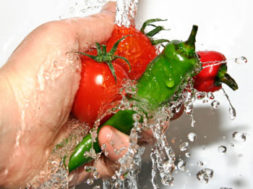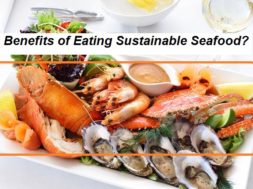In the field of food safety and correct food handling, there are four recognized principles by which the food industry regulates how it relates to all issues of food hygiene.
Together, these principles work to cover all critical areas where the contamination of food occurs.
By observing these principles we greatly minimize the hygiene risks involved in the handling of food and in the consequential contamination of food.
The four golden rules of food hygiene are:
Buy food from a safe source.
Prevent bacteria from entering your food.
Prevent the multiplication (or growth development) of bacteria in your food.
Destroy bacteria on food, utensils and work surfaces
Rule No.1)
Buy food from a safe source.
Make sure that you buy food only from suppliers who are well known and reputable. It is important to check that all foods be within their expiry date and kept in appropriate conditions in the shop.
Serving counters should be kept spotlessly clean, likewise machines such as mincers, knives, and slicing machines.
Freezers, fridges, and chillers should display their temperatures and should be set at less than 5 degrees centigrade for chilled products and -18 degrees centigrade or less for frozen products.
All packaging should be original and not tampered with or forged. This would indicate that the product is not the original content and has been produced by a fraudulent company. Do not buy these products under any circumstances because they threaten your health.
All reputable retail businesses that sell food should display up to date licenses from all the required regulatory authorities as required by law. Check with your local authority to find out what licenses a food shop or a supermarket must have to be open for business in your area.
Rule No.2)
Prevent bacteria from entering your food
Ok! This is the pace to tell you a little about bacteria and how they multiply.
All bacteria, when they have the right conditions begin to multiply. The conditions that they need are,
a) temperature of above 10 degrees centigrade, (some say 5 degrees).
b) A food source. Bacteria break down all organic matter into sugars and use the basic food molecule which is monosaccharide glucose for their metabolism.
Bacteria need only 20 minutes to adjust themselves to a new food source. For example, Supposing a bacteria was on sugary food and suddenly found itself on fish, the transition the bacteria would need to be able to digest the new food source is twenty minutes.
c) A source of water.
On acquiring suitable conditions bacteria then commence to reproduce at a rate of one division of the whole colony every 20 minutes. E.G. If you had 1000 bacteria on a piece of food, to begin with, you will have one million bacteria after 20 minutes. In the following 20 minutes, the number would jump up to one million million bacteria. After that, the numbers are simply astronomical!
Keeping bacteria from getting into your food is primarily down to the prevention of cross-contamination.
Cross-contamination means the contact of any food source with any form of contamination from another source. This could be other food (raw or processed), Packaging, garbage, contaminated water or air, unclean or sick humans, animal life, or unclean tools and surfaces.
In good professional kitchens, there are different fridges for different functions. For example, there is one fridge for dairy, another for cold fresh vegetables and another for food that has been cooked.
As homeowners we do not usually have this luxury, therefore, it is advised to keep cooked foods at the top of the fridge and raw materials at the bottom in closed containers. This way the risk of contamination is greatly lessened.
Eggs, especially, should be kept in a closed container because they have many bacteria on their outer shells.
Remember to wash your hands and arms to the elbow before preparing food. Cut your salads first and then go onto the foods that are to be cooked making sure to thoroughly wash your board before moving on to different types of food.
Wash all surfaces before and after work with a good detergent. Put clothes into the wash after each usage. Always start with a clean cloth.
Rule No.3)
Prevent the multiplication of bacteria in your food.
As Stated above bacteria need the correct conditions to divide themselves. To do this they need A) the right temperature, B) Food and C) water.
It follows, then, that food should be stored at the lowest possible temperature to keep bacteria inactive. Also, do not allow your food to come into contact with water before you cook it. By thawing food in the water we are giving the bacteria a heads start.
Cook your food at the earliest possible moment and after it is cooked keep it at a temperature of at least 70 degrees centigrade until it is served.
If you have to cool your food, do not put hot food in large containers into the fridge. Divide it up into smaller containers and do not stack them in such a way that air cannot circulate around the containers. Once cool freeze if possible.
When thawing food, do it in the fridge in a closed container. Remember, it’s better to plan a meal a couple of days ahead of time than to have had to take a couple of sick days off work in bed.
Once thawed, cook the food as soon as possible.
The best way to destroy all bacteria is to cook your food in a pressure cooker. This way the combination of increased temperature and increased atmospheric pressure will completely sterilize the food.
Rule No. 4).
Destroy bacteria on food, utensils and work surfaces.
This rule speaks for itself. Do not let them develop in your kitchen.
Cook food as quickly as possible. Food that cannot be cooked should be frozen if it is not eaten within a short space of time.
Alternative forms of food preservation such as dehydration, smoking, canning, sterilizing, concentrating and pickling are all alternative ways of preventing the development of and destroying bacteria in food.
The surroundings also constitute a source of food contamination, therefore, you should wash your work surfaces after each usage with hot water and detergent.
In professional kitchens, all working areas should be surfaced with stainless steel. This way, the surface may be cleaned with special grease and lime removing chemicals that have either a caustic soda base or a phosphoric acid-base. For safety, remember never to mix chemicals; especially acids and alkalis like caustic soda and phosphoric acid.
Likewise, wash all utensils in very hot water and washing-up detergent. The water should be so hot that you need gloves to tolerate the heat.
Store pots, pans, plates, cutlery and other utensils in a clean and dry place. Make sure that they are dry before storing them away. Use a clean dish towel every time. Store them upside down. Keep all storage areas clean. Check regularly for signs of vermin.
Heat crockery to 80 degrees centigrade before serving. This will prevent contamination even Further.
These are the four principles of good food hygiene. Follow them closely and the chances of you or your clients becoming sick are substantially lessened.





